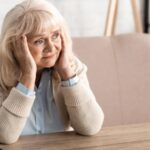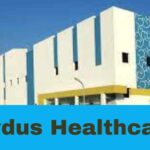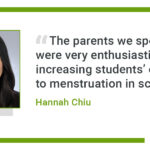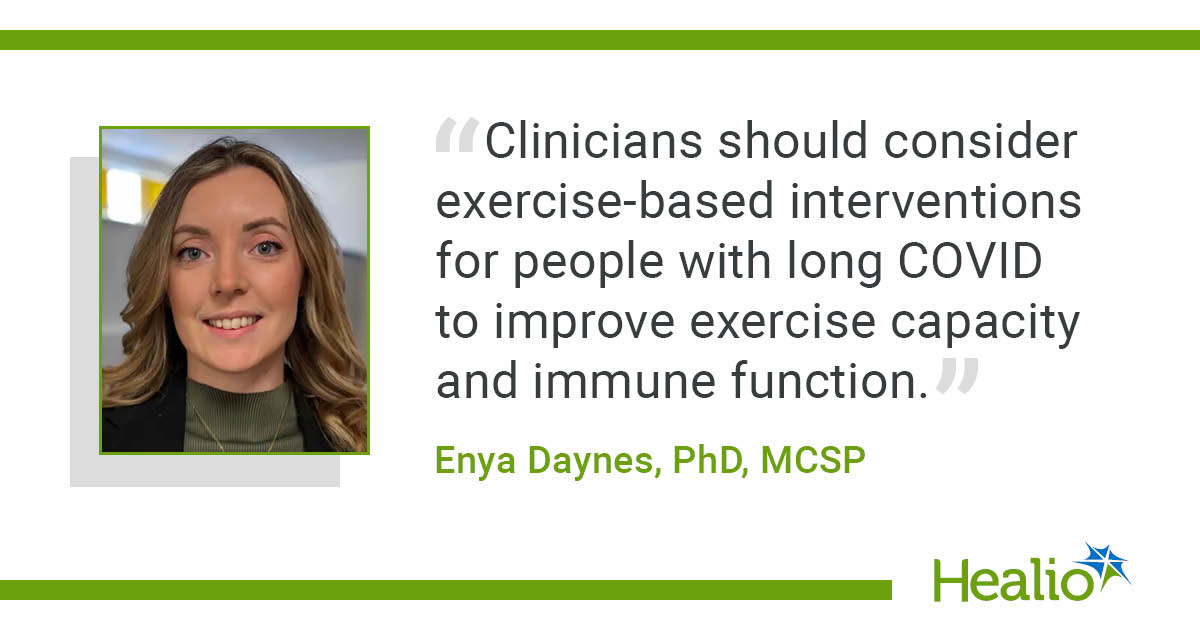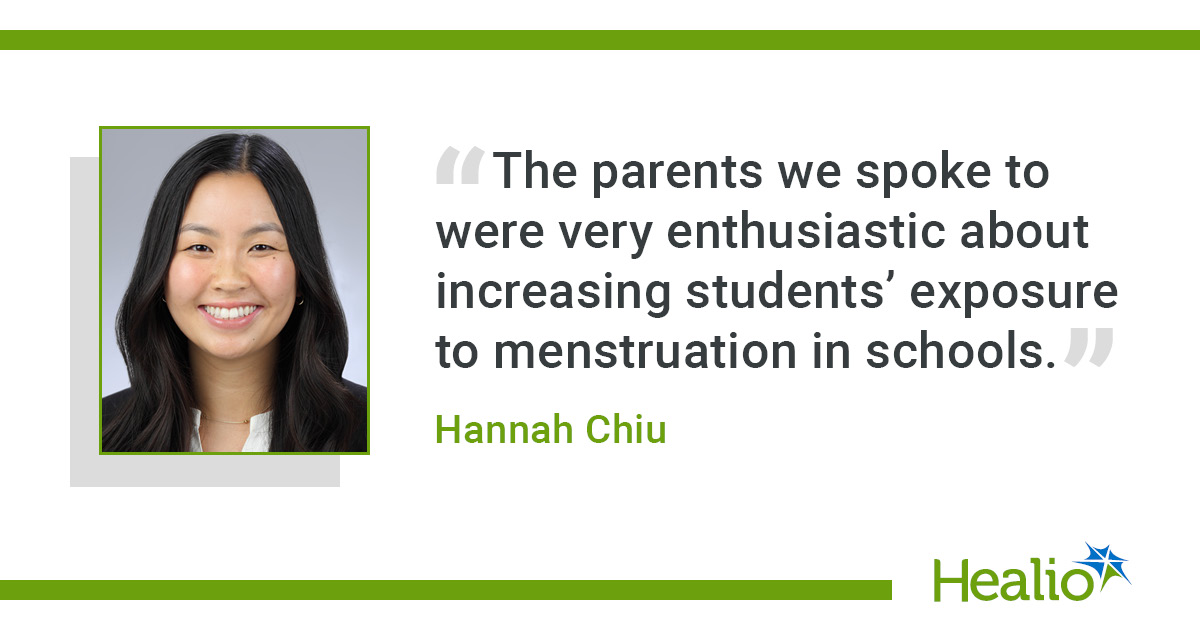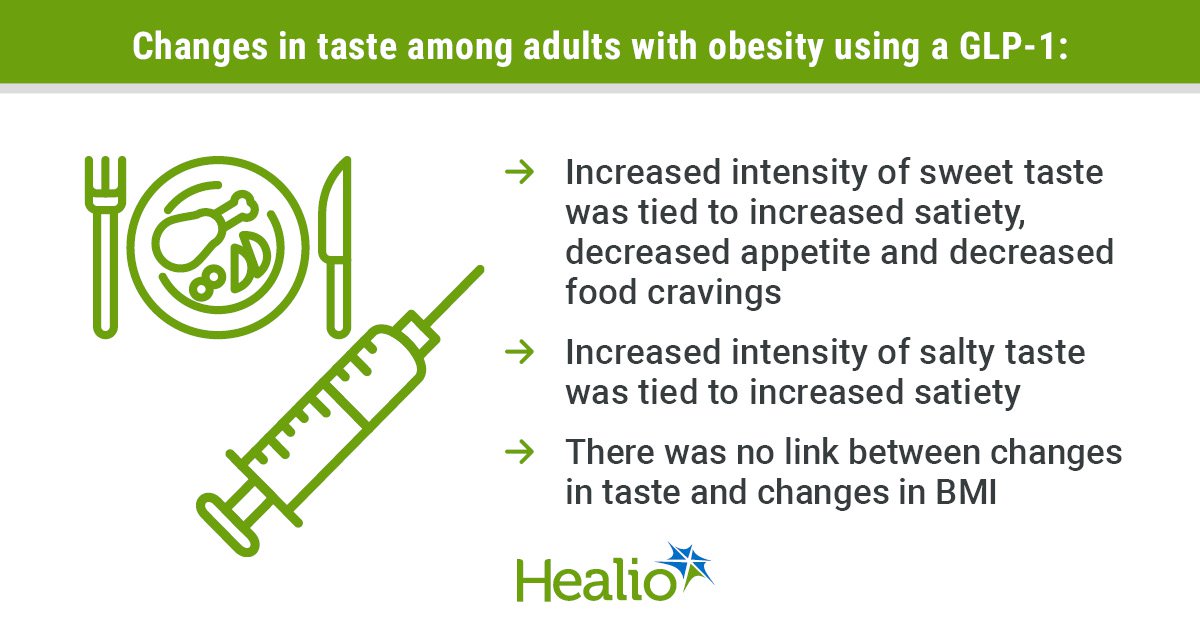October 06, 2025
3 min read
Key takeaways:
- Those who received 8-week exercise-based rehabilitation had significantly more CD8 naïve, central memory and effector memory cells at the end of the program.
- This was also found for CD4+ central memory cells.
Individuals with post-COVID syndrome had higher immune cell counts after receiving exercise-based rehabilitation vs. usual care for 8 weeks, according to data presented at the European Respiratory Society International Congress.
“Clinicians should consider exercise-based interventions for people with long COVID to improve exercise capacity and immune function,” Enya Daynes, PhD, MCSP, research physiotherapist at NIHR Leicester Biomedical Research Centre in the respiratory and pulmonary rehabilitation department and clinical academic physiotherapist at University Hospitals of Leicester NHS Trust, told Healio. “It is possible this could prevent future infections or viruses and result in improved quality of life.”

In a substudy within a multicenter, single-blind, randomized controlled trial, Daynes and colleagues assessed 32 individuals with post-COVID syndrome following hospitalization with COVID-19 to determine how an 8-week exercise-based rehabilitation intervention impacts CD4 and CD8 T cells and subsets vs. usual/routine care.
Patients assigned to the exercise-based rehabilitation intervention had supervised sessions two times a week involving aerobic and strength training, guided education and a home exercise program, according to the presentation.
Using venous blood samples at baseline and week 8, researchers found immune cell population counts via standard flow cytometry.
The intervention group included 13 individuals (median age, 62 years; 62% women; 77% white; median BMI, 33.2 kg/m2), and the control group included 19 individuals (median age, 61 years; 21% women; 84% white; median BMI, 32.1 kg/m2).
Among those who received the exercise-based rehabilitation intervention, the number of CD8 naïve, central memory and effector memory cells each significantly increased/improved between baseline and week 8. In contrast, the presentation highlighted significant decreases in the number of CD8 naïve and central memory cells among those who received usual care.
“These [central and effector memory CD8+T] cells can identify and fight future infections more rapidly, providing a crucial systemic immune response, and long-term immunity,” Daynes said in a press release from ERS.
Switching to CD4+ cells, researchers found that the number of central memory cells significantly went up from 292 cells/μL at baseline to 359 cells/μL at week 8 in the rehabilitation group, whereas the number of these cells dropped in the usual care group (312 cells/μL to 227 cells/μL).
“These [cells] are responsible for providing a quick response to any infections that the body has encountered before, which could include COVID,” Daynes said in the release.
Similarly, the rehabilitation group had a significant rise in the number of total natural killer cells from baseline to week 8 while the usual care group had a significant reduction, according to the presentation.
“The differences between groups are attributed to an improvement in the exercise-based treatment group and a worsening in the usual care group,” Daynes told Healio. “This is important to note because a lack of exercise could be detrimental to immune system function.
“We know that people with long COVID experience immune exhaustion similar to chronic infections, and it is surprising to see this bounce back within an 8-week course,” Daynes added. “This is hopeful for people with long COVID to demonstrate such benefits with a treatment that is so accessible such as exercise.”
Lastly, researchers reported that changes in inflammatory and cardiometabolic biomarkers (c-reactive protein, IL-6, total cholesterol, high-density lipoprotein, low-density lipoprotein, triglycerides and glucose) from baseline to week 8 did not significantly differ between the groups.
Moving forward, Daynes told Healio they will continue to follow these individuals.
“We plan to follow up with our participants to explore if these benefits result in less repeat COVID infections and less other illnesses,” Daynes said. “We would also like to understand if these benefits are comparable in people with long COVID who were not hospitalized.
“Further understanding of the immune system dysfunction, its link to treatments and how exercise modalities can improve this would be valuable in long COVID and other respiratory diseases,” she said.
For more information:
Enya Daynes, PhD, MCSP, can be reached at e.daynes@nhs.net.


